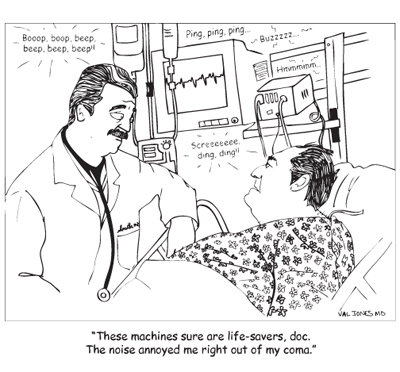September 9th, 2011 by GarySchwitzer in Health Policy, Opinion
No Comments »

In a comment left on my blog, Jamie Bearse, the chief operating officer of Project Zero – The Project to End Prostate Cancer, showed how quickly and deeply discussions about screening tests can devolve into ugly rhetoric. Bearse wrote:
“Your comments along with Otis Brawley’s vendetta against the PSA sentence men to die from prostate cancer testing. Shame on you. It’s important to know your score to make a proper diagnosis and decision of if and how to treat prostate cancer. Groups that create screening guidelines for cancer such as American Urological Association and National Comprehensive Cancer Network say get tested. In fact, Brawley is at odds with his own organization. ACS supports testing as well. Otis Brawley has killed more men by giving them an excuse to not be tested. Don’t follow that path just because of your own bad experience.”
I responded:
“Jamie,
My comments policy states that I will delete comments that make personal attacks. You certainly did that with your statement that the chief medical officer of the American Cancer Society “has killed” and that he has “sentenced men to die.”
Nonetheless I have posted your comment because I think it’s important for other readers to see how some pro-screening rhetoric so quickly and completely devolves into ugliness.
…
YOU ARE WRONG Read more »
*This blog post was originally published at Gary Schwitzer's HealthNewsReview Blog*
March 10th, 2011 by Shantanu Nundy, M.D. in Health Tips, Research
1 Comment »

What is the leading cause of death in the United States? Heart disease? Cancer? No, it’s smoking. Smoking? Yes, depending on how you ask the question.
In the early 90s, McGinnis and Foege turned the age-old question of what people die of on its head by asking not what diseases people die of but rather what the causes of these are. Instead of chalking up the death of an older man to say lung cancer, they sought to understand the proximate cause of death, which in the case of lung cancer is largely smoking. Using published data, the researchers performed a simple but profound calculation — they multiplied the mortality rates of leading diseases by the cause-attributable fraction, that proportion of a disease that can be attributed to a particular cause (for example, in lung cancer 90 percent of deaths in men and 80 percent of deaths in women are attributable to smoking). Published in JAMA in 1993, their landmark study became a call to action for the public health community.
When looked at the conventional way, using data from the 2004 update of the original study, heart disease, cancer, and stroke are the leading causes of death, respectively. This accounting may help us understand the nation’s burden of illness, but does little to tell us how to prevent these diseases and improve health. Through the lens of McGinnis and Foege we get the actual causes of death (e.g., the major external modifiable factors that contribute to death). This analysis shows that the number one cause of death in America is tobacco use, followed closely by poor diet and lack of physical activity, and then alcohol consumption. Read more »
*This blog post was originally published at BeyondApples.Org*












